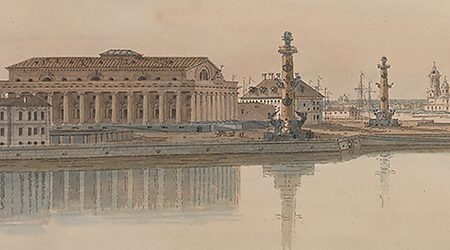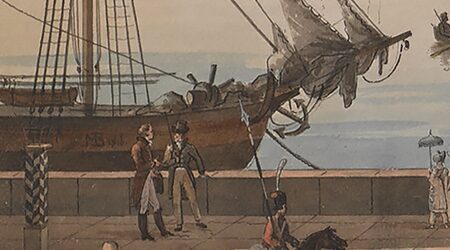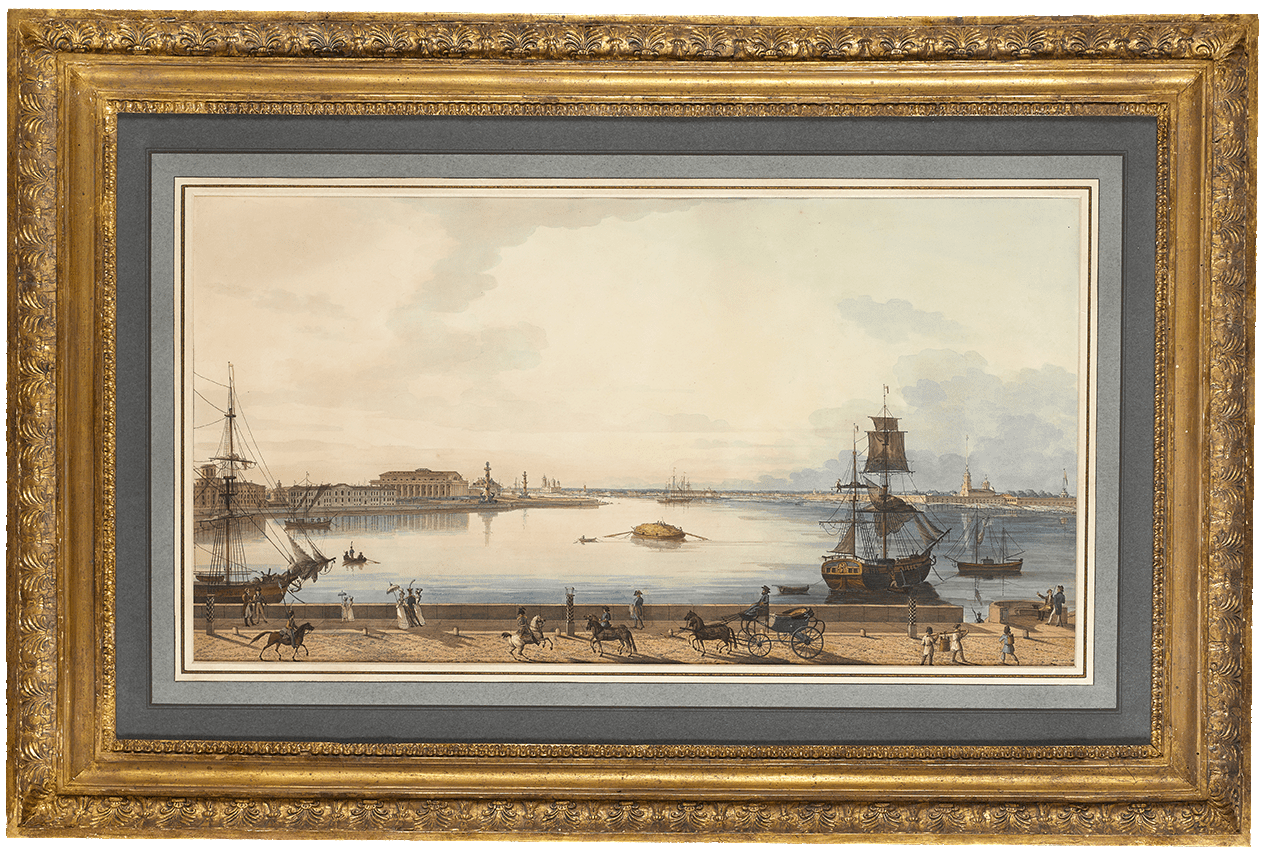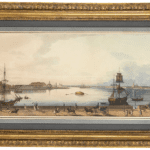Provenance
Private collection, Germany
Sale: Hugo Ruef Kunstauktionen, November 9, 2000, lot 1739
Sale: Sotheby’s London, July 11, 2001, lot 221
Having studied as an architect, Maxim Vorobiev (1787-1855) became famous as a veduta (Italian for “view”; plural vedute) painter. During his prolific career, the artist produced several views of St.Petersburg and was particularly good at capturing the cleanly proportioned buildings then fashionable in the city. This particular group of works differ from the more heavily rendered oil paintings of the artist’s late period, in which he experimented with oblique perspectives and extreme weather, instead foregrounding the clarity and proportion of his earlier style.
Vorobiev was born in 1787 in Pskov. At the age of ten, he enrolled in the elementary classes at the Imperial Academy of Fine Arts in St.Petersburg and went on to study landscape painting with Fyodor Alekseyev and architecture with Jean-François Thomas de Thomon. In 1820 he made a trip to Palestine as part of a diplomatic mission, on behalf of then Grand Duke Nikolai Pavlovich, to draw and make architectural plans of the major Christian sites, for eventual use on projects near Moscow. During the Russo-Turkish War, he was attached to the retinue of Nicholas I to sketch and make paintings upon his direction, which included several scenes from the Siege of Varna. An influential teacher as well as an artist, in 1815 he was made a Professor of landscape painting at the Academy of Arts in St.Petersburg and was an important influence on Ivan Aivazovsky, Alexey Bogolyubov, and the Tchernetsov brothers.
Maxim Vorobiev’s works are held in major national collections, including The State Russian Museum and The Hermitage in St.Petersburg, and The Pushkin Museum of Fine Arts in Moscow.













